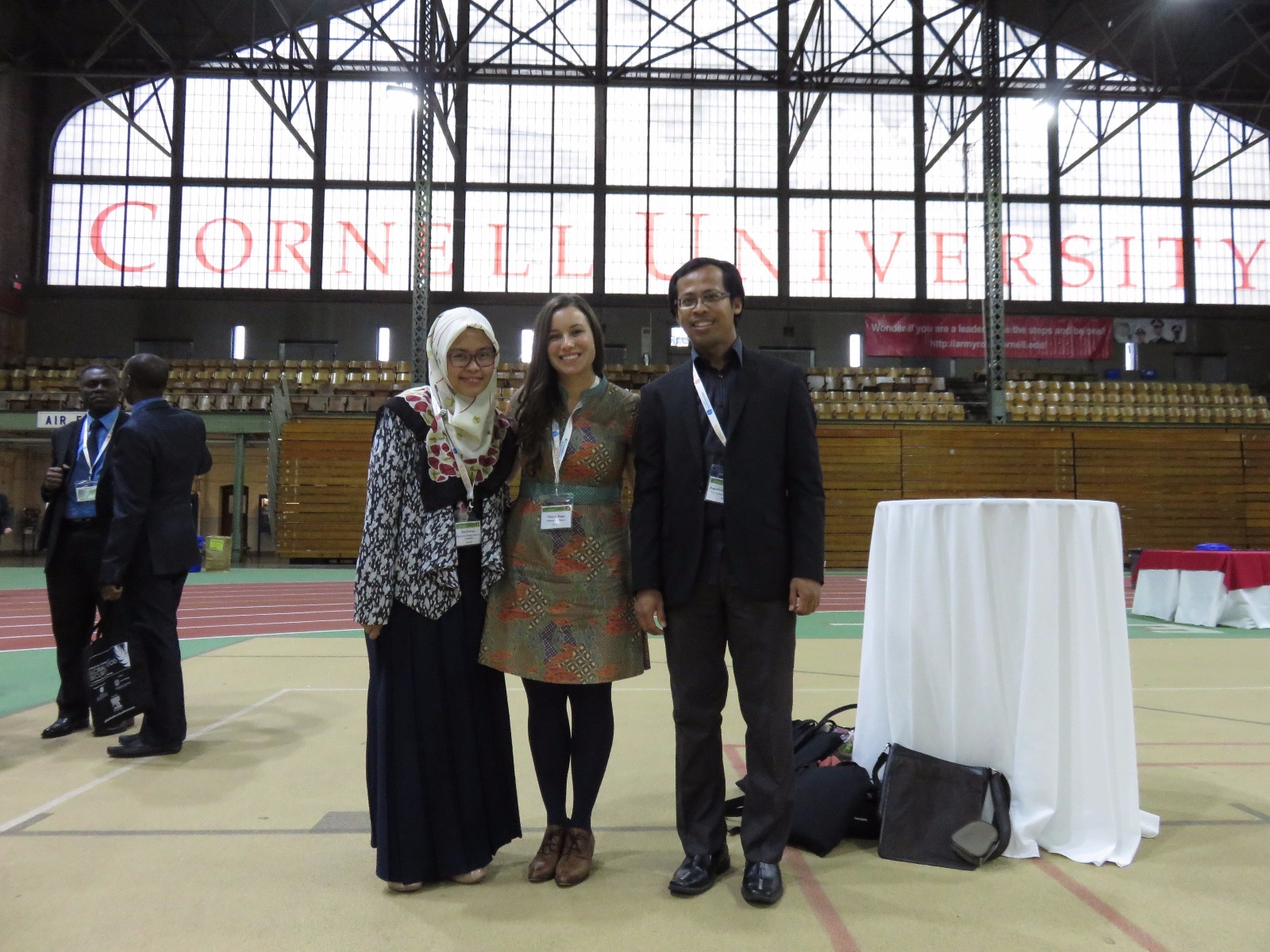After 15 hours of flights from Adelaide, I arrived at 6 o’clock in the morning at the Los Angeles International Airport. The immigration queuing line was surprisingly quite short.
“Next!” said the immigration officer, firmly but nicely.
She asked me politely ‘”What is the purpose of your trip?”.
I said “I am going to attend the global food security conference in Ithaca”.
The officer replied to me “Food SECURITY?” (with so much emphasis on the word security and raised her eyebrows) “What do you mean by that?”.
Then I found myself spending about 10 minutes to discuss the theme of the conference, my research on school milk program and my job in Adelaide. By far, that was the longest chat I’ve ever had with an immigration officer in the world.
The experience made me realise one thing: people may interpret the concept of food security differently; or they might not be aware of the term! I wonder whether this is actually our biggest issue. Lack of awareness might then limit their contribution to possible solutions.
Everyone working with farmers and other stakeholders in agrifood markets wants to help address food security issues with their own way according to their expertise. My attempt to better contribute to the solutions is by attending conferences such as the 2nd Global Food Security Conference in Ithaca, NY and building networks with other researchers with an aim of learning from their experience addressing food security issues in other countries, other sectors and most interestingly using other lens.

Risti Permani (left) and Suprehatin (right) with Victoria Zeppa of University of Alberta (middle) atttending 2nd Global Food Security Conference at Cornell University
I attended the conference with my colleague Suprehatin, who is currently doing a PhD at our group. I presented my paper on school milk program in Indonesia based a collaborative project with Dr Nunung Nuryartono and his team at InterCAFE at Bogor Agricultural University, while Suprehatin presented his PhD research project on horticulture sector in Indonesia under supervision of Associate Professor Wendy Umberger and Dr Dale Yi.
I have also been privileged to be part of the Junior Researcher Task Force responsible for promoting discussions on food security using social media. It was a great opportunity to develop my science communication skills spreading information, ideas and hopefully contributing to solve this million dollar question: how to achieve food security.
introducing, the Junior Researcher Task Force! here's how to follow us this week at #gfs2015 http://t.co/FBGBVQshVc pic.twitter.com/MVQ2SXEQpf
— Megan Sheahan (@mbsheahan) October 12, 2015
I used my Twitter intensively during the conference – see #gfs2015 for exciting tweets. and published a blog post with my great collaborator Dr Joanna Upton of Cornell University on topic that was much being discussed at the conference: ‘Improving nutrition: more choices, making the right ones‘.
Good news from the conference is that we can see that there is wider acceptance of multi-dimensional aspects of food security. It is not just about production and self-sufficiency. The coverage of topics being discussed in relation to food security has also continued to expand. Issues such as include climate change, access to food, food assistance programs, adoption of technology, nutrition are widely discussed.
Discussions on challenges facing agrifood markets remained me of a nice summary presented by President of China Agricultural University, Professor Bingsheng Ke at the APEC Food Security Training and Workshop that I attended last month. He suggested:
“Challenge ahead is about how to produce more, better, safer food with less farm land, water and labour”.
Despite more advanced analytic skills that many research projects have demonstrated, it is evident that there is a need to continue to work on the solutions in particularly how to make practical, measurable and achievable recommendations.
Sustainable development goals have narrowed down key aspects that are highly relevant to our concerns on food security. Target 2.1 aims ‘zero hunger’:
By 2030, end hunger and ensure access by all people, in particular the poor and people in vulnerable situations, including infants, to safe, nutritious and sufficient food all year round
This is an ambitious target. While calories intake might have been improved across the globe, consumption of foods with sufficient micro nutrients remains a challenge.
Young MacDonald has a farm E-I-E-I-O
And in his farm, it’s all HI-TECH E-I-E-I-O
With data from here
And data from there
He grows our food with greater care
Young MacDonald has a farm E-I-E-I-O
Given these changes in agriculture sector, I challenged my students to think about these questions: What are the key challenges facing agrifood markets and what they would propose as the solutions?
- Skype lecture with Raghavan Sampathkumar
- Marvyn at Q&A
- Reyza Ramadhan
- Gengtao Liu
- Lijun Li
- James Muhia and Simon Ndung’u
- Xiaquan Lu
- Group 1 in action
- Group 2!
*This article is written by Risti Permani and subject to her personal opinion.










